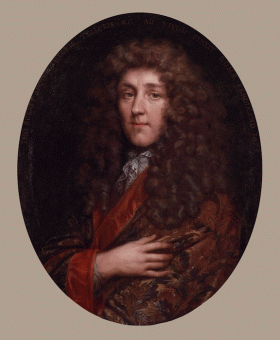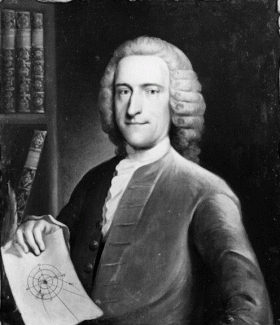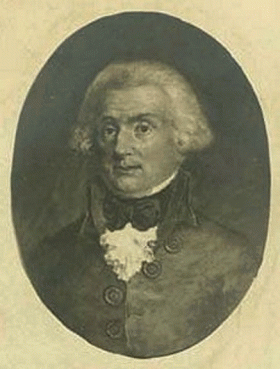


From left to right: Jacob Ferdinand Voet, Thomas Burnet (1675). Courtesy National Portrait Gallery,
London. William Whiston (18th century), anonymous. Giovanni Rinaldo of Carli-Rubbi (date unknown).
Jan 22, 2012
Ever since 1950, ‘Velikovsky’ has been a household name, associated with a set of adventurous but highly unorthodox claims that remain contested today.
In his writings, Immanuel Velikovsky documented his ideas with copious references, but gave the impression that the ideas themselves were the spontaneous fruits of his own creative mind. As it happens, however, almost every generation since the Enlightenment had its own ‘Velikovsky’, advancing remarkably similar ideas. This is true to the extent that virtually none of Velikovsky’s core hypotheses were original.
Who were these earlier ‘Velikovskys’?
In 1655, the French lawyer and theologian Isaac de la Peyrère (1596-1676) departed from Christian consensus with his ‘pre-Adamite’ thesis. Taking a cue from earlier Jewish discourse, de la Peyrère reasoned that a race of humans had existed long before Adam and the ‘creation of the world’ as narrated in Genesis really concerned only the latest episode in a continuous cycle of cosmic destruction and creation. Velikovsky opened Worlds in Collision with a discussion of such ‘world ages’ and wrote a chapter entitled ‘The Pre-Adamite Age’ that remains unpublished today.
In the 1680s, the English theologian Thomas Burnet (c. 1635? – 1715) argued that the earth’s rotational axis had originally been perpendicular to the ecliptic plane, producing a uniform season and climate on earth, until the deluge precipitated the tilting of the axis: ‘… the Position of the primæval Earth was strait, its Axis being always placed and retained in a parallel Line to the Axis of the Ecliptick, whence all the Motions of the Heavens were uniform, and the Course of the Year was pure and unmixed, without Differences of Seasons’. Changes in the inclination of the earth’s rotational axis were a staple of Velikovsky’s theories.
Between 1696 and 1708, the English polymath William Whiston (1667-1752) proposed that the earth was originally a comet, which was only transformed into a planet following the impact of another comet. The deluge transpired when the earth passed through the – supposedly watery – tail of the same or yet another comet. From classical writings, Whiston further inferred that the earth’s rotational axis had acquired its tilt on the same occasion and that the year had originally consisted of only 360 days. A planet in cometary phase, extremely close flybys of a comet, catastrophic tilting of the earth’s axis and a shorter year were defining characteristics of Velikovsky’s analysis.
In a work published posthumously in 1766, the French mathematician, linguist and philosopher Nicolas Antoine Boulanger (1722-1759) submitted that the human mind as a whole suffers from a deeply-rooted psychological trauma, induced by cosmic catastrophes on a global scale, which myths and rituals collectively and exclusively commemorate: ‘All cults, hydraulic in origin, were commemorative rehearsals of the one catastrophe which weighed heavily upon man.’ This impression prefigured Velikovsky’s psychoanalytical take on mankind’s post-catastrophic trauma and amnesia by nearly 2 centuries.
Giovanni Rinaldo, count of Carli-Rubbi (1720-1795), was an Italian economist and antiquarian with an impressively versatile mind. Based on a study of ancient sources, Carli – in his American Letters, composed between 1781 and 1783 – speculated that the earth, prior to the deluge, completed a smaller orbit around the sun, resulting in a year of 360 days. A passing comet transformed the former circular shape of the earth’s orbit into an elliptic one, triggered worldwide floods and conflagrations, caused the ‘extension of the axis of the earth’s path’ responsible for the current length of the year and resulted in a reversal of the direction in which the sun is seen to rise or set. Catastrophic consequences of a close encounter with a comet, an apparent reversal of ‘west’ and ‘east’ and an original year length of 360 days are all salient aspects of Velikovsky’s model.
In 1823, the German philologist Johann Gottlieb Radlof (1775-1827/1829) released a slim booklet containing a set of radical ideas that establish him as the earliest known ‘planetary catastrophist’. Radlof accepted Olbers’ hypothesis (c. 1802) that the minor planets Ceres, Pallas, Juno and Vesta recently discovered in the ‘asteroid belt’ between the orbits of Mars and Jupiter were the remnants of a former giant planet moving in that orbit.
Relying heavily on classical traditions, Radlof dubbed this planet ‘Phaethon’ and contended that it fell apart within human memory upon collision with a comet. He further surmised that the planet Venus was one of the remaining fragments, which embarked on a ‘phase of wandering’, involving a few close encounters with Mars, before settling into its current orbit.
Due to these turbulent events, the earth’s rotational axis inclined from its original untilted position with respect to the equatorial plane: ‘Because of the collisions of the two disturbed cosmic bodies Hesperus and Phaëthon, but especially because of the former’s change of orbit and the equilibrium ratios of all planets of our solar realm that were changed entirely as a result, the centre of gravity of our earth must also have been disrupted and its former position with respect to the pole changed twice.’ Floods, fires, earthquakes and prolonged darkness ensued as well. The entire package of an erratic Venus flirting with Mars and occasioning geological upheaval before commencing on its present orbit survives wholesale in Velikovsky’s oeuvre.
The French aristocrat Antoine Bernard Alfred, baron d’Espiard de Colonge (1810-), rehearsed similar ideas in a book published in 1865: a giant planet once existed in the asteroid belt between Jupiter and Mars; the moon was either captured or formed from a detached portion of the earth at the dawn of history; and extreme cosmic perturbations attributed to the close passage of a ‘vast planetary or meteoric body’ thoroughly affected the face of the earth. The baron emphasised the eye-witness quality of mythical records: ‘… the mythology, I say, is the history of anything close that took place on the earth itself at a certain time which chronology cannot exactly determine.’
He also introduced the concept of distinct chronological ‘ages’ associated with cosmic catastrophe as a new ingredient to the evolving catastrophist cocktail: the stars were invisible at first, while the sun metamorphosed in the course of four eras; and all human cultures preserved the memory of a bygone ‘age of the gods’: ‘The golden age or terrestrial Paradise … is anterior to grand events that changed everything on the earth …’ A sequence of catastrophic episodes formed the framework of Velikovsky’s vision, while Velikovsky’s treatment of human recollections of a ‘moonless’ age survives in unpublished form.
Rens Van Der Sluijs
Books by Rens Van Der Sluijs:
Traditional Cosmology: The Global Mythology of Cosmic Creation and Destruction
Volume One: Preliminaries Formation












